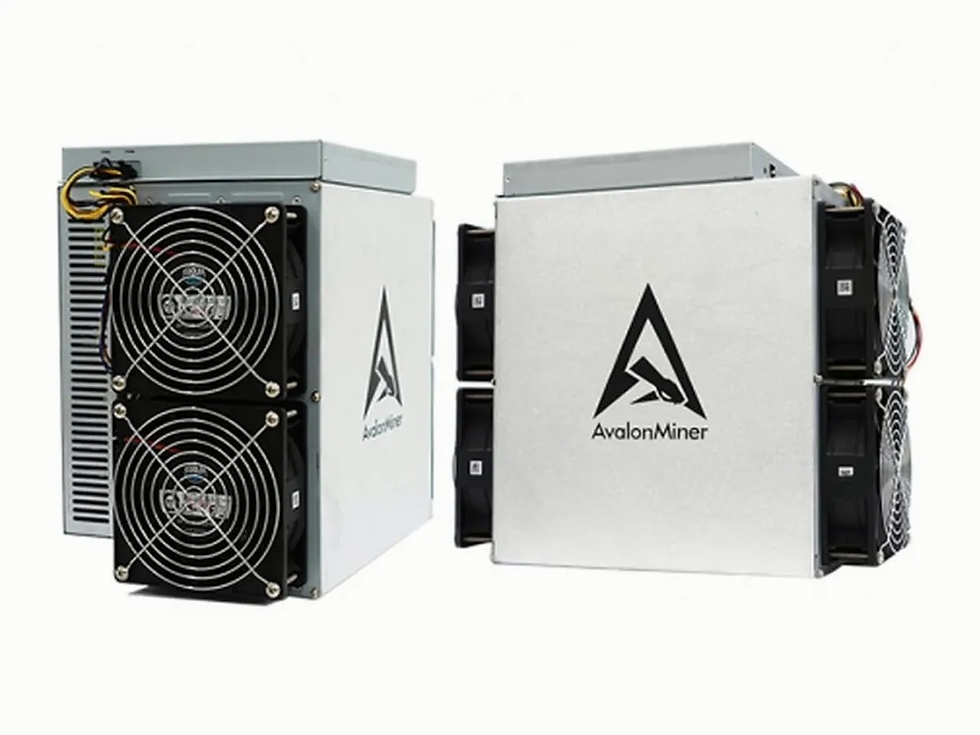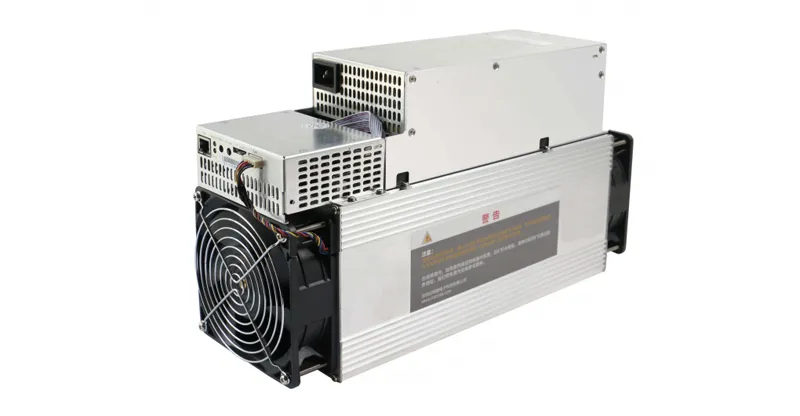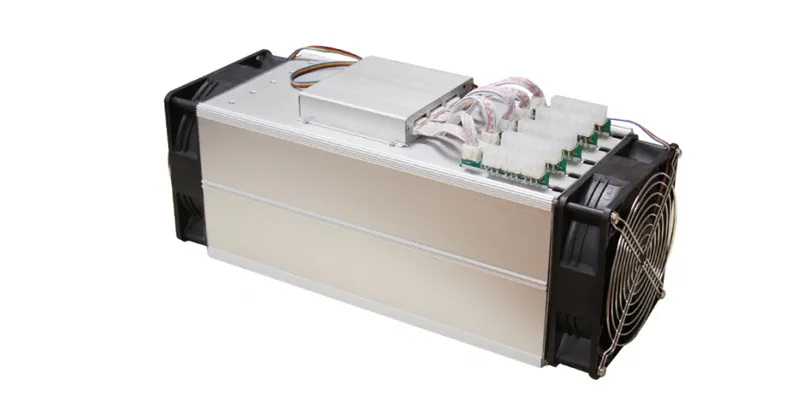Best Bitcoin Mining Hardware in 2025
- Slava Jefremov
- Aug 12
- 4 min read

Introduction
With the global GPU shortage still echoing through tech markets and import tariff exemptions long expired, many potential miners are asking the same question: Is it still worth investing in a Bitcoin mining machine in 2025?
The answer depends on several variables, such as Bitcoin’s market performance, electricity costs in your region, and, most importantly, the efficiency of your mining hardware. While bullish BTC prices and cheap power can make mining highly lucrative, success still hinges on finding the sweet spot between initial hardware cost, power consumption, and hash rate.
Once these numbers are clear, you can plug them into a mining profitability calculator to estimate your returns based on Bitcoin’s block reward and your electricity rate. With that foundation in mind, let’s explore the seven most noteworthy ASIC miners dominating the market in 2025, each excelling in its own niche.
Key Takeaways
Efficiency matters most. Look for low joules per terahash (J/TH) for better profitability.
Noise levels can be a dealbreaker; heavy-duty miners may require a dedicated soundproof space.
Upfront cost vs. ROI should guide your decision. Cheaper miners may deliver faster returns but lower long-term output.
Warranty terms vary significantly between manufacturers, so factor them into your total cost of ownership.
Market availability is often limited, so plan purchases in advance and consider secondary marketplaces.
Top Bitcoin Mining Machines for 2025
Antminer S19 Pro

Power draw: 3.25 kW
Hash rate: 110 TH/s
Price: ~$10,000 – $19,600
This Bitmain powerhouse goes toe-to-toe with MicroBT’s M30S++ and delivers an impressive 29.5 J/TH efficiency. Thanks to its updated firmware, boot times are faster, and the overall user experience is smoother. Built with a 7nm TSMC chipset—similar to the latest AMD Ryzen CPUs—it blends cutting-edge semiconductor tech with mining power.
Unfortunately, current supply chain constraints mean you may struggle to purchase it directly from the manufacturer.
AvalonMiner 1246

Power draw: 3.43 kW
Hash rate: 90 TH/s
Price: $4,000 – $5,300
Canaan Creative, a pioneer in ASIC Bitcoin miners since 2013, crafted the AvalonMiner 1246 as a heavy-duty workhorse. Its four high-speed fans keep it cool but produce 75 dB of noise—akin to loud traffic—so a dedicated, sound-isolated space is essential.
Despite the noise, it offers a competitive 38 J/TH efficiency, comes with a one-year warranty, and even integrates an AI microchip for optimized operation. Availability, however, can be scarce due to high demand.
AvalonMiner A1166 Pro

Power draw: 3.4 kW
Hash rate: 81 TH/s
Price: $2,200 – $2,850
Although slightly less powerful than the AvalonMiner 1246, the A1166 Pro offers improved 42 J/TH efficiency and a lower price tag, making it a strong value pick. That said, its 180-day warranty is shorter, and buying directly from Canaan requires a minimum order of five units—perfect for industrial-scale miners but impractical for smaller setups. Expect similar fan noise levels to its sibling model, and prepare for difficulty sourcing units in today’s competitive market.
WhatsMiner M32-62T

Power draw: 3.348 kW
Hash rate: 62 TH/s
Price: $1,075 – $1,400
As one of the more budget-friendly options, the M32-62T from MicroBT uses Samsung’s 8nm chipset. While it’s not the most efficient miner—running about 30% less efficient than the AvalonMiner 1246—it costs four to five times less than high-end models.
With an ROI potential in under four months (depending on electricity costs and BTC price), it’s ideal for those testing the waters before committing to more expensive hardware. A 180-day warranty and included PSU make it ready to run out of the box.
WhatsMiner M30S++

Power draw: 3.472 kW
Hash rate: 112 TH/s
Price: $9,900 – $14,000
A true mining juggernaut, the M30S++ delivers the highest hash rate currently available on the retail market, paired with an excellent 31 J/TH efficiency. Built with Samsung’s 8nm ASIC chipset, it’s designed for miners who demand top performance and have the capital to invest.
At current BTC prices, miners could see an ROI within 10–12 months, assuming moderate electricity rates. Released in late 2024, it remains one of the most sought-after ASICs for serious mining operations.
Ebang EBIT E11++

Power draw: 2 kW
Hash rate: 44 TH/s
Price: $2,024
Ebang’s EBIT E11++ stands out for its compact tubular design with efficient dual-sided cooling. The setup process is straightforward thanks to its Simplify IP software, which allows quick Ethernet-based startup.
That said, its hash rate efficiency lags behind top competitors, making it more of a fallback choice when better hardware isn’t available. Warranty coverage is split—six months for the full unit and a year for the controller.
Bitmain Antminer S5

Power draw: 0.56 kW
Hash rate: 62 TH/s
Price: ~$500
Although it debuted in 2014, the Antminer S5 still has a place in mining setups where low electricity consumption is key. At just 2.5 kg with a maximum noise level of 65 dB, it’s ideal for smaller spaces. Its open-top cooling design further adds to its efficiency.
With a hash efficiency of 0.51 J/GH, it can be a profitable choice for hobbyists or those with minimal operating costs.
Conclusion
Selecting the right mining hardware in 2025 comes down to balancing efficiency, upfront cost, and operating environment.
The MicroBT M30S++ reigns supreme for raw power and efficiency—best for dedicated, large-scale miners.
The AvalonMiner A1166 Pro offers one of the best value-to-efficiency ratios, though ordering constraints apply.
For budget-conscious miners, the WhatsMiner M32-62T provides a cost-effective entry point with rapid ROI potential.
The Bitmain Antminer S5, while dated, still works for low-power setups or small-scale mining projects.
As always, DYOR (Do Your Own Research) because market volatility, local electricity rates, and personal risk tolerance will ultimately determine your success.
Frequently Asked Questions
How does crypto mining hardware work?
Crypto mining hardware works by performing repetitive calculations to solve cryptographic puzzles. Once a miner’s hardware successfully solves a puzzle, it validates and records transactions on the blockchain, earning the miner a reward in the form of newly minted cryptocurrency coins. This process of proof-of-work helps maintain the integrity of the blockchain network.
What is the main difference between GPU and ASIC?
The primary distinction between GPU and ASIC lies in using a card and chip. An ASIC miner employs a dedicated chip to solve intricate algorithms, whereas GPU mining relies on a graphics card for cryptocurrency mining. The key advantage of GPU mining hardware is its widespread availability. Additionally, GPUs offer greater flexibility in their application compared to ASICs.
How long does mining hardware last?
Diverse factors influence the durability of a mining GPU, including the mining algorithm, the hardware quality, the mining intensity, and the cooling system’s effectiveness. Generally, a properly maintained GPU can endure for a period ranging from two to five years, though individual outcomes may differ.



Comments